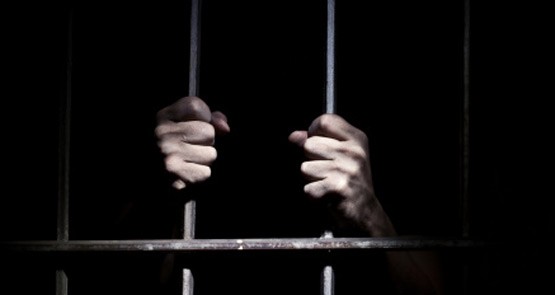
It wasn’t until I appeared in the Youth Justice Court in June last year that I realised our criminal justice system and its dealing with juveniles had reached a nadir. I was representing one of the Aboriginal children who had escaped the “new” Don Dale Juvenile Detention Centre, which is in fact the reopened former Berrimah Prison.
Following two days on the run, the two escapees decided to drive their stolen vehicle straight back into Berrimah through the front gates. Film of this Harry Potter Platform 9 3/4 manoeuvre was shown across the world.
The two juveniles charged did not appear in court. They appeared through a video link from the Holtze adult prison, where they were handcuffed and shackled to their chairs. Behind them were two male prison officers with the door closed. I asked the magistrate to order their release from handcuffs.
Her response was that she didn’t believe she had the legal power to do that. I submitted that her most important task was to ensure the juveniles received a fair trial and having them handcuffed and shackled to chairs in the adult prison prevented this happening.
The Magistrate rejected my submission, and the proceeding continued.
The evidence revealed the conditions being meted out by the NT Department of Correctional Services to Aboriginal juvenile detainees: handcuffing, spit hooding, and solitary confinement in a cell for 22 out of 24 hours, lasting from seven to 17 days, which included eating their meals (some hot) with their bare hands.
I also learnt about the infamous incident in 2014 when some were subjected to a gas attack in order to break up a disturbance brought about by some detainees in such solitary confinement.
I walked out of the proceeding dumbfounded. The question that screamed, and still does, is how can we have a department that deliberately deals with juvenile detainees in such a way?
Australia is presently in the middle of a Royal Commission into Institutional Responses to Child Abuse. The Northern Territory is still, eight years on, governed by federal Intervention legislation as a consequence of the notorious Little Children are Sacred report.
Notwithstanding the UN Convention on the Rights of the Child 1990, the debacle that has been exposed in the past two years within the NT juvenile justice system shows quite clearly that, by deliberate design and policy, Aboriginal children are treated in a barbarous, inhumane and illegal way.
Let there be no doubts as to whom we are talking about here. This is all about Aboriginal children.
The Northern Territory’s adult imprisonment rate is four or five times higher than any other jurisdiction in Australia. The adult imprisonment rate is 903.5 per 100,000 compared with 193.5 nationally; 86% of those prisoners are Aboriginal. Internationally, the NT tops all countries in the United Nations figures for imprisonment rates. The country with the highest imprisonment rate, but below the Northern Territory, is the United States with 721 per 100,000 — a situation President Barack Obama has recently described as “all wrong”.
With juveniles, the NT detention rate is six times the national average, and 97% of them are Aboriginal. The numbers are calamitous enough, but what became, in 2015, one of Australia’s biggest human rights stains is the deliberate mistreatment of those NT Aboriginal children in detention.
The Vita Review commissioned by the NT government last year stated that the juvenile justice system existed in “a climate of daily crisis”. Michael Vita was the former superintendent of NSW’s Long Bay Jail and Villawood Detention Centres. He was tasked to review juvenile detention in the NT as a result of the highly publicised incident on August 21, 2014, which led to kids being gassed before being hooded and transferred, some unlawfully, into the adult prison. Following on from this incident, the then-NT Children’s Commissioner, Dr Howard Bath, decided to carry out his own investigations.
The Vita and Bath reports are scathing about how juveniles are detained and the way youth justice officers (YJOs) reacted in the various situations that were investigated.
Bath found that the inappropriate reactions were largely explicable by the lack of staff qualification and training.
Further, Bath found that in relation to an incident in August last year, “officers had acted inappropriately in threatening a detainee and attempted to cover up the CCTV surveillance to hide this”. And claims from Corrections that detainees had assaulted staff with shards of glass, bricks and steel poles were “inaccurate and misleading”. Similarly, Vita found that, “despite assertions to the contrary, 90% of the staff were casual”.







Crikey is committed to hosting lively discussions. Help us keep the conversation useful, interesting and welcoming. We aim to publish comments quickly in the interest of promoting robust conversation, but we’re a small team and we deploy filters to protect against legal risk. Occasionally your comment may be held up while we review, but we’re working as fast as we can to keep the conversation rolling.
The Crikey comment section is members-only content. Please subscribe to leave a comment.
The Crikey comment section is members-only content. Please login to leave a comment.